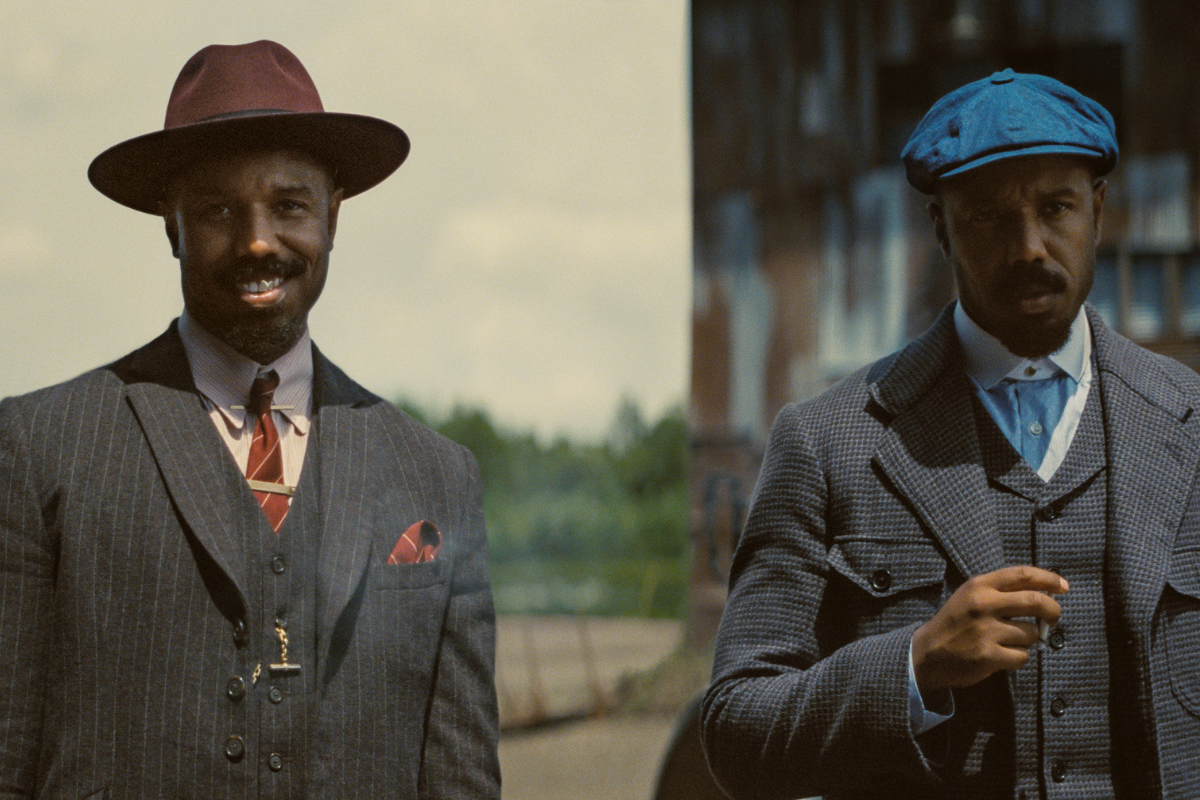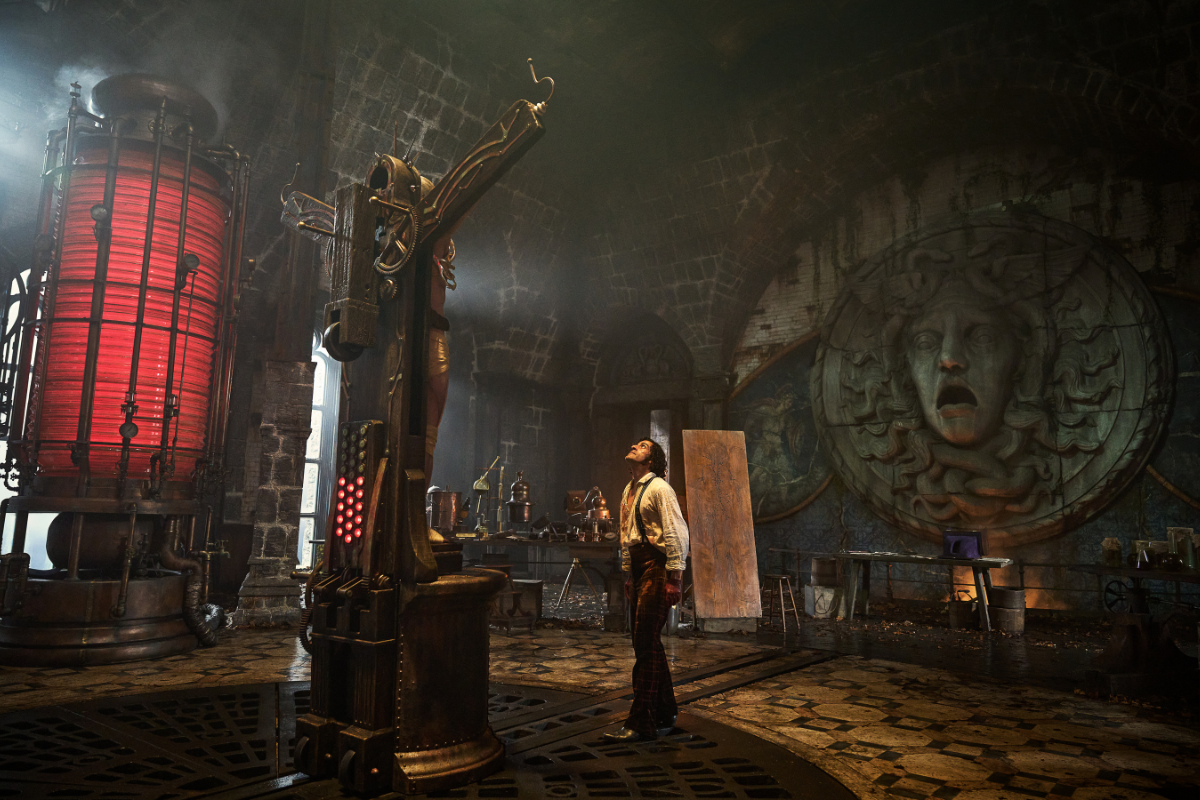Darth Vader, The Incredible Hulk, and Five Other Characters with Dissociative Identity Disorder
It’s easy to see why DID and its causes make for strong stories. But while there are plenty of movies and television shows featuring people with DID, the ones that treat the topic with empathy for the lived experience are few and far between.
Signs say M. Night Shyamalan should split his time watching these before he’s too old.
Can You Spot Common Mistakes Portraying Dissociative Identity Disorder In Movies?
More than that, can you spot when a movie gets DID right? Because when research shows that Dissociative Identity Disorder is about as common as having red hair (between 1.5% to 2%), the fact is that improving the popular perception of Dissociative Identity Disorder will save lives. And so it’s vital (and at least a little fun) to dig into what movies get it right, what movies get it wrong, and what we can learn from all of them.
Before we get started, we must confess that thirteen different people wrote the article you’re now reading. There is, however, one significant difference between these thirteen people and anyone else you’ll meet. These thirteen people all share the same body. That’s because I—or we—have Dissociative Identity Disorder, what WebMD describes as “a complex psychological condition characterized by the presence of two or more distinct identities or personality states in a single person.”
While our experience doesn’t reflect that of everyone with DID, our condition coupled with our background in media uniquely positions us to offer insight on how we can improve our shared understanding and representation of Dissociative Identity Disorder in the stories we tell. And hey, it might also lead to making a better movie.
DID is likely caused by many factors, including severe trauma during early childhood (usually extreme, repetitive physical, sexual, or emotional abuse). WebMD says that the dissociative aspect is considered a coping mechanism when the individual is faced with a situation or experience “that’s too violent, traumatic, or painful to assimilate with their conscious self.”
It’s easy to see why DID and its causes make for strong stories. But while there are plenty of movies and television shows featuring people with DID, the ones that treat the topic with empathy for the lived experience are few and far between.
In case you couldn’t tell, there will be massive spoilers below.
If DID is caused by childhood trauma, it’s easy to see where Anakin Skywalker’s path fractured his identity. Born a slave on Tatooine, Anakin was found and ultimately freed by Qui-Gon Jinn and Obi-Wan Kenobi. But his freedom came with the first of many compromises. While he could leave, his mother couldn’t come with him, perhaps deepening Anakin’s attachment trauma. A mother abandoning a child can cause attachment issues, and the effect is equally horrifying if it's the child who is forced to abandon their mother.
Star Wars: The Phantom Menace was made for kids and so doesn’t feature the obtrusive trauma Anakin likely experienced before the Jedi found him. It’s easy to imagine his life as a slave, his daily circumstances endangering his sense of safety and security from such a young age that his many selves never integrated into a single person. Darth Vader, in that sense, may have always been with Anakin. It’s just that the Dark Side empowered that identity so that it could remain forward in consciousness. At least until Anakin’s son Luke triggered Vader to switch back into Anakin, giving Luke enough time to kill the emperor and free his father’s soul.
For all M. Night Shyamalan got wrong about DID in his return-to-form film Split, pay attention to what he gets right. In some of the most inaccurate film representations of DID, the different identities—also referred to as Alters—may serve no purpose other than to be randomly violent. They can’t be reasoned with because they have no motivation.
In Split, James MacAvoy delivers a stunning performance as the lead antagonist with DID. Each identity serves a protective purpose around the host. And crucial to this portrayal, each identity carries a motivation that allows them to be reasoned with—to a degree. Each identity attempts to negotiate shared space and outcomes, such as when Hedwig bends the rules just a tiny bit to play with the kidnapped main character, but only to a point. Hedwig’s window to the outside world is a secret, but it’s also just a drawing.
In Fight Club, an unnamed narrator meets a man that only he can see. Together, the two cause a significant amount of mayhem, least of all by starting a fight club. Don’t worry, I’m not a member, so I can talk about it. The two people, however, are actually one person. He just doesn’t realize this until the third act.
To everyone else, the narrator and alter ego are the same person, but to the narrator, this is a separate individual—and that’s where Fight Club turns out to not be about DID. A person with DID does not hallucinate fictional people who are able to affect the external world through a physical form separate from the host. A person’s mental image of an alter may include how the alter looks, including if that differs from the host body, but each identity is aware of their ties to the host body, even if some or all of the alters are not yet aware of each other.
Fight Club is therefore not about DID or even its previous label MPD. It is also not about schizophrenia. It is about an Alter Ego and the integration of the shadow self. While there are many similarities, a person can have a shadow self without also having DID.
Directed by James Mangold, Identity features multiple storylines converging into one. On one side of the story, a convict awaits a verdict that will determine if he is responsible for his crimes. On the other side of the story, a group of strangers gather Agatha Christie-style at a hotel in a remote location. Most of them will not survive the night, but who is the killer? We discover the convict awaiting a verdict has Dissociative Identity Disorder, and each person at the hotel is in fact each of his alters.
He is told he will be set free if he kills the violent identity that lives inside of him—thus leaving only the non-violent identities—and that’s where the film goes wrong. Alters cannot be killed or die. While it is possible for new alters to emerge or old alters to be integrated, in a DID system, true death doesn’t happen. Most people with DID choose cooperation rather than to attempt integration. Symptoms of the DID may appear less pronounced simply because the trauma has been healed.
The Incredible Hulk represents a classic dual personality. After being bombarded with gamma rays, Bruce Banner becomes capable of turning into a green-skinned, well-muscled figure whose anger is as limitless as his strength. In most iterations, including from the MCU, Bruce Banner and the Hulk form two distinct identities within the same body. In the MCU, similar to what happened in the comics, Bruce Banner eventually stops fighting for primacy against the Hulk and negotiates a truce. They merge into Smart Hulk.
According to the Trauma Dissociation website, in a system of alters, integration is generally seen as neither possible nor desirable. In the MCU, the Smart Hulk identity sees itself as having merged two distinct identities into one. For the character’s DID to match most possible outcomes, the alters would need to still be present as distinct identities, though it’s possible they could negotiate such deep cooperation that they could appear to behave as a unified person.
One place where Hulk resembles real DID depends on whether the Hulk manifested as an identity in childhood vs adulthood. As noted on DID Research, “DID cannot form in an individual who has a fully integrated personality, and chronic childhood trauma is necessary to disrupt normal personality development.” In the comic iteration of The Incredible Hulk, Bruce Banner suffered intense, chronic abuse as a child, causing him to remain as a fractured self between Bruce and the Hulk identity.
In The Flash’s epic nine-season run, Barry Allen proved he was the fastest man alive. But more to the point, the show gave us another example of Dissociative Identity Disorder. Caitlin Snow gains the aptly-relevant ability to manipulate molecules of water in an icy fashion—cryokinesis, as it were. As the show continued, we learned that Caitlin and Killer Frost were two identities stuck in the same body.
Later in the series, the identities suddenly merged into a single person named Khione. While it is possible for some systems to integrate or merge, the process is lengthy. Even with the Flash on the case, there are no quick fixes. The Trauma Dissociation website describes integration as “more like gradually forming a personality that incorporates all of them than anything else.”
The website DID Research states that because “DID is the result of trauma, it's highly comorbid with posttraumatic stress disorder (PTSD) and complex posttraumatic stress disorder (C-PTSD), and flashbacks, emotional numbing, nightmares, emotional dysregulation, and pessimism about the future are common.” What’s important is to show the complexity and mix of symptoms present in a genuine DID system. Different diagnoses often present together, with the Trauma Dissociation website listing examples such as, “Substance Abuse/addiction, Eating Disorders, Major Depressive Disorder, Anxiety Disorders and Phobias, self injury, plus Avoidant or Borderline Personality Disorder.”
A funny but inaccurate portrayal of DID comes in the Jim Carrey movie Me, Myself, & Irene. In the story, Jim Carrey plays a man whose trauma leads to a dual personality akin to Dr. Jekyll & Mr. Hyde. One identity is sweet and soft, while the other is as angry as a disturbed bed of fire ants. That’s not too far from DID, but the movie makes a serious blunder by conflating DID with schizophrenia. The National Alliance of Mental Illness went so far as to protest the movie, saying it “perpetuates a myth that schizophrenia—a severe, biologically-based brain disorder—is a split personality.” As noted by the Trauma Dissociation website, “schizophrenia originally meant a “split mind” but not split or multiple personalities — it is a psychotic disorder, not a dissociative disorder."
The DID Research website goes further, stating that schizophrenia “does not involve alters and often does not involve dissociation. In contrast, those with DID are not delusional or hallucinating their alters.” While it is possible for a person with schizophrenia or DID to both hear voices, in a DID system, the person is hearing the projected voices of their alters rather than an outright delusion or hallucination.
And finally, let’s look at Daniel Isn’t Real. In the titular movie, Daniel is the young imaginary friend of Luke—but you already know Daniel isn’t imaginary. Through increasingly violent episodes, Daniel reveals himself as a malevolent force intent on claiming Luke’s body for himself. At one point, Luke worries he has schizophrenia. The audience, however, may begin to suspect that the film is once again conflating schizophrenia with DID. Daniel’s ability to take control of the body shows that this could not be schizophrenia. It could be DID, though—assuming Daniel isn’t merely “a traveler,” as he calls himself. Only in the movies would the alter turn out to be an evil spirit hoping to take your body for itself.
Did we talk about your favorite DID character? What are some of your favorite movies that got it right (or wrong)?
Learn more about the craft and business of screenwriting and television writing from The Writers Store!
Stephenie Magister is the second trans 40 Under 40 Nominee from University of Georgia in history. After a decade as an editor for best-selling and award-winning authors, a traumatic brain injury changed her life forever. Now serving as the host for Queer History with Step-Hen-Ie, she conducts long-form interviews with queer people and allies who are leaving a lasting positive impact.







